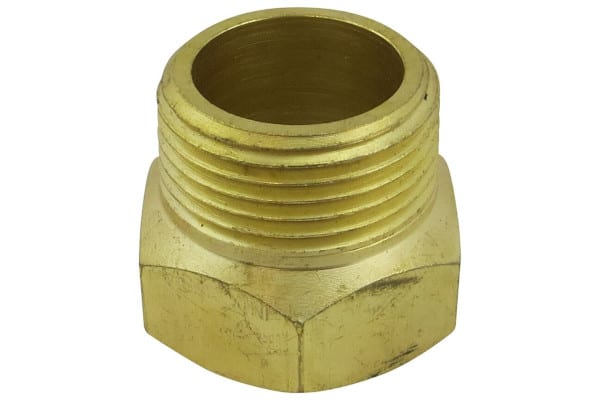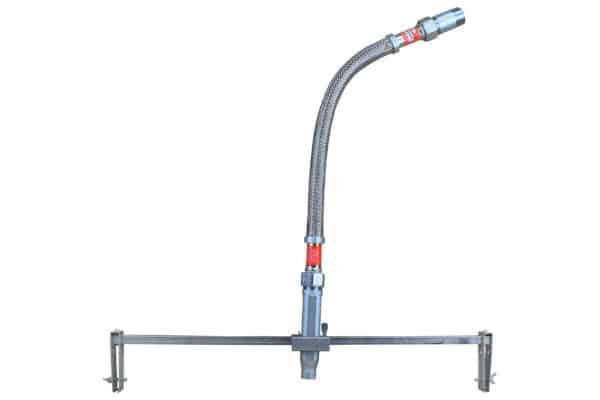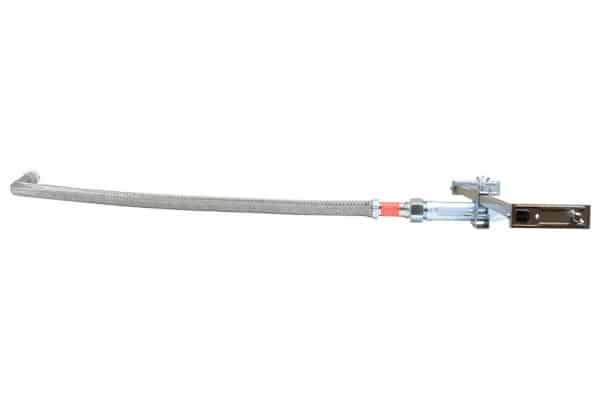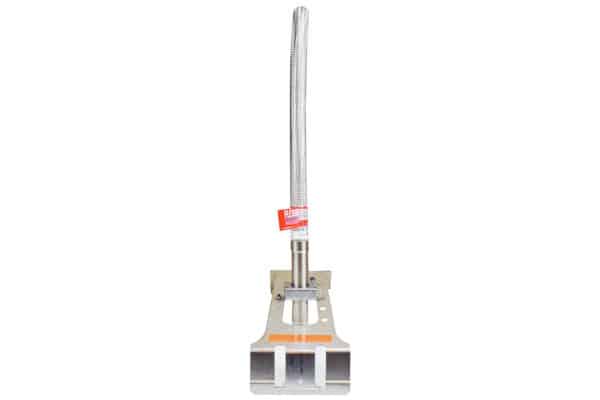Variable lengths, flexibility, and orifice sizes allow flexible drops to ease a common struggle for fire sprinkler contractors
The exact placement of sprinkler heads can prove challenging for installers. But it’s an important task, both for the safety of the building and the effective use of water supplies. Before flexible fire sprinkler drops, installers had only a handful of options available to them when design requirements or installation errors made small adjustments to sprinkler head placement necessary. But today, those contractors can make those changes in far less time.
But that’s not the only benefit of flexible fire sprinkler drops: to get a handle on the need-to-know basics and advantages of this simple yet surprisingly useful product, read on.
Browse our catalog of flexible fire sprinkler drops from industry-leading manufacturers.
Flexible fire sprinkler drops provide a useful alternative to straight, fixed piping
Flexible drops connect the rigid piping framework of a fire sprinkler system to a sprinkler head. Often, the sprinkler head’s supply line features a rigid pipe with a pipe nipple. When installers want to extend the length of that pipe, the standard solution involves using a sprinkler extension. This small metallic fitting features threads—both for the pipe and the sprinkler head—connected by a length of what’s essentially metal pipe.

But if installers instead need greater lengths or have more complex design requirements, they can install a flexible fire sprinkler drop. This device has a relatively flexible stainless steel hose that looks and functions much like the braided metal lines used in faucet installations.

A big advantage of flexible drops is that they are much faster to install. Further, the threaded fitting end reduces the chance of leakage. And since they are furnished in lengths ranging from two feet to nearly seven, the sprinkler head can be positioned more precisely over the area to be covered by the sprinkler.
Versatility and ease of installation can make drops a cost- and labor-saving purchase
Flexible fire sprinkler drops can be used in both wet and dry systems. They include a bracket that holds the sprinkler head in place, which helps contractors position the sprinkler head accurately in the center of tiles in drop ceiling applications. These drops also provide some of the adaptability to movement that’s required in earthquake-prone areas.
They must be matched to the supply pipe diameter, which governs total gallons per minute (GPM), so that they do not exceed the ability of the system to deliver equal water pressure to all sprinklers. There are also guidelines for the number of bends allowed, governed by the length of the flexible line.
The higher initial cost of flexible drops relative to a solid pipe style may be a deterrent. But in light of the much shorter assembly time, price becomes less of a consideration when assessing costs throughout an entire fire sprinkler system. A sprinkler fitter can install flexible drops four or more times faster than rigid alternatives.
For seismic protection and ease of installation, plus a look at leading brands
For a more detailed look at these useful fittings, check out our in-depth articles on the topic, including:
- Guide to Flexible Fire Sprinkler Drops, Part 1: Ceilings, Sprinkler Armovers, and Seismic Issues
- Guide to Flexible Fire Sprinkler Drops, Part 2: Selection and Code Issues for FlexHead, VICFLEX, and More
If you’d like to compare flexible drops now, our supply of FlexHead and SprinkFLEX assemblies includes:
- SprinkFLEX assemblies in up to 59″ lengths for 3/4″ sprinklers
- SprinkFLEX assemblies in up to 71″ lengths for 1/2″ heads
Shop our selection of FlexHead and SprinkFLEX flexible sprinkler head drops.
Can’t find the information you need online? Call us at (888) 361-6662 or email support@qrfs.com.
This blog was originally posted at blog.qrfs.com. If you found this article useful, check us out at Facebook.com/QuickResponseFireSupply or on Twitter @QuickResponseFS.





can sprinkflex be used outdoor (patio)
Robert — Honestly, we’ve never been presented with that use case. They are made of stainless steel, offering some corrosion resistance, but you should consult with a fire protection pro to assess where they would be placed, exactly, and who will comply with NFPA standards. You can also contact the manufacturer to run a use case by them.